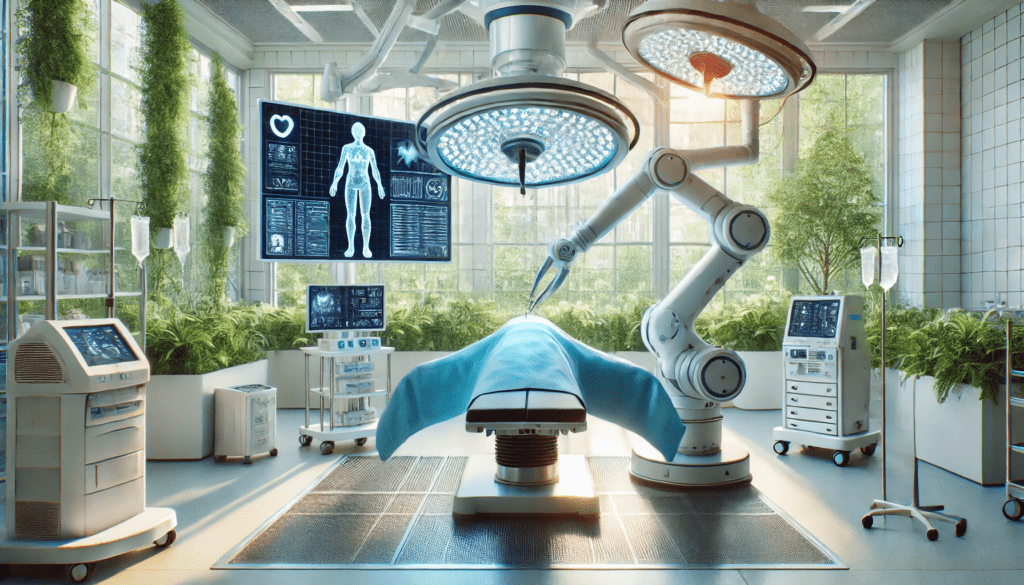Introduction
Artificial Intelligence (AI) is revolutionizing surgical practices, enhancing precision, safety, and patient outcomes while embracing Solarpunk ideals of sustainability and harmony between technology and humanity. AI is also contributing to preventive health care (see also Salutogenesis) by enabling swift and more accurate evaluation of diagnostic data sources.
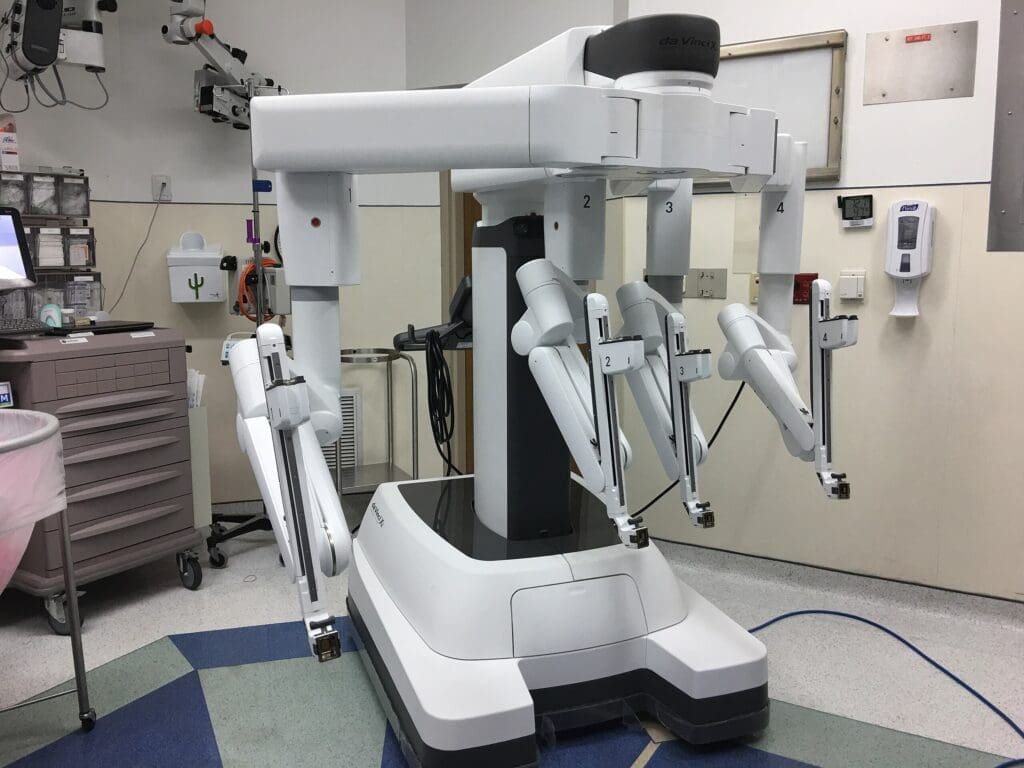
Historical Evolution of Surgical Technology
Surgical advancements have evolved from rudimentary techniques to sophisticated procedures. The 20th century introduced aseptic methods, anesthesia, and imaging technologies like X-rays, significantly improving surgical safety and effectiveness. Later, minimally invasive surgeries and robotic assistance further enhanced precision and reduced recovery times.
Robot-assisted surgery has its roots in 1983 with the introduction of Arthrobot, a groundbreaking innovation developed in Vancouver, Canada.[1] Arthrobot was the first surgical robot to assist in a clinical setting. Designed to enhance precision and efficiency, Arthrobot worked alongside surgeons, primarily supporting orthopedic procedures by automating tasks like positioning and guiding instruments.
The success of Arthrobot laid the foundation for the advanced robotic platforms we see today, such as the da Vinci Surgical System. This System is a robotic-assisted surgical platform, designed to facilitate minimally invasive surgery. It uses robotic arms and advanced imaging technologies such as 3D high-definition visualization to enhance depth perception during surgery.
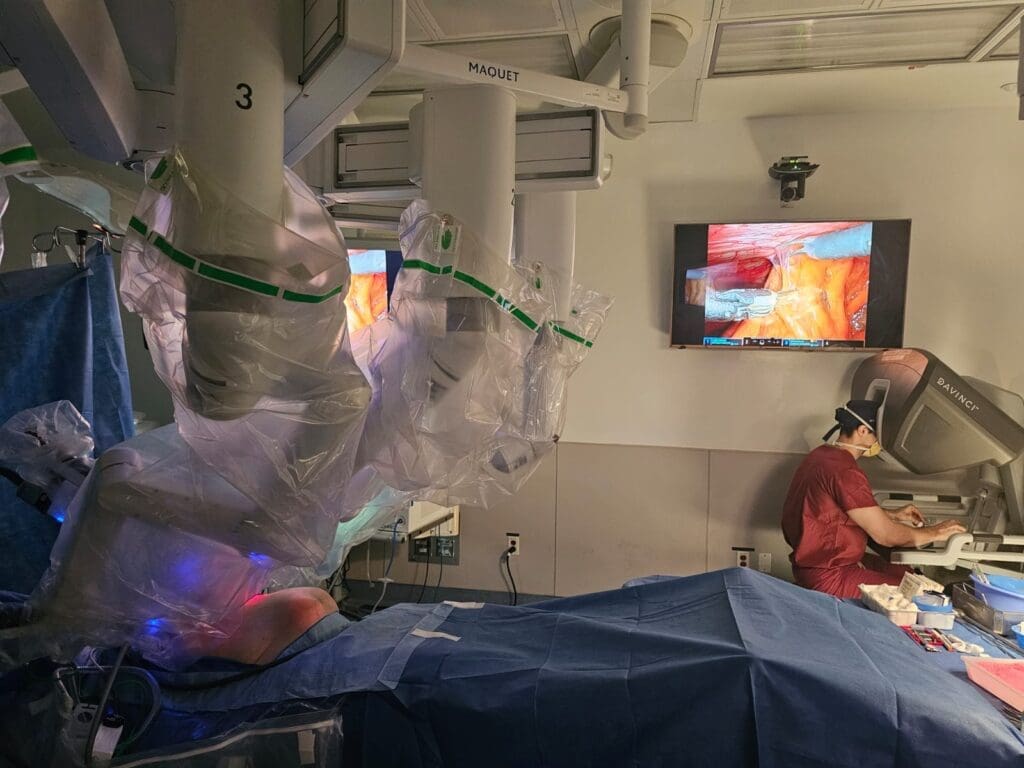
AI Applications in Surgery and Diagnostics
Microsurgery Robots:
The Symani Surgical System, developed by Medical Microinstruments (MMI), is a pioneering robotic platform designed to enhance precision in microsurgical procedures.[2] Featuring robotic arms with seven degrees of freedom, it became the first FDA-approved robot for microsurgery in April 2024. While the current system incorporates advanced features such as tremor reduction and motion scaling, MMI is actively working on integrating artificial intelligence (AI) to further augment its capabilities. Current features include:
- Tremor Reduction: The system minimizes the impact of human hand tremors, allowing for more stable and precise movements during surgery.
- Motion Scaling: This feature translates the surgeon’s macroscopic hand movements into microscopic instrument actions, enabling delicate manipulation of tiny anatomical structures.
MMI is developing enhanced AI-powered functionalities aimed at automating routine surgical tasks. For instance, AI algorithms are being designed to assist in suturing blood vessels, thereby standardizing certain procedures and potentially reducing operation times.
Digital Twin Technology:
Researchers at Johns Hopkins University have pioneered the use of digital twin technology to create personalized, three-dimensional models of patients’ hearts. These digital “Avatars” are constructed using data from cardiac contrast-enhanced magnetic resonance imaging (MRI) scans, which provide detailed images of the heart’s structure, including areas of scarring and damaged cells.[3]
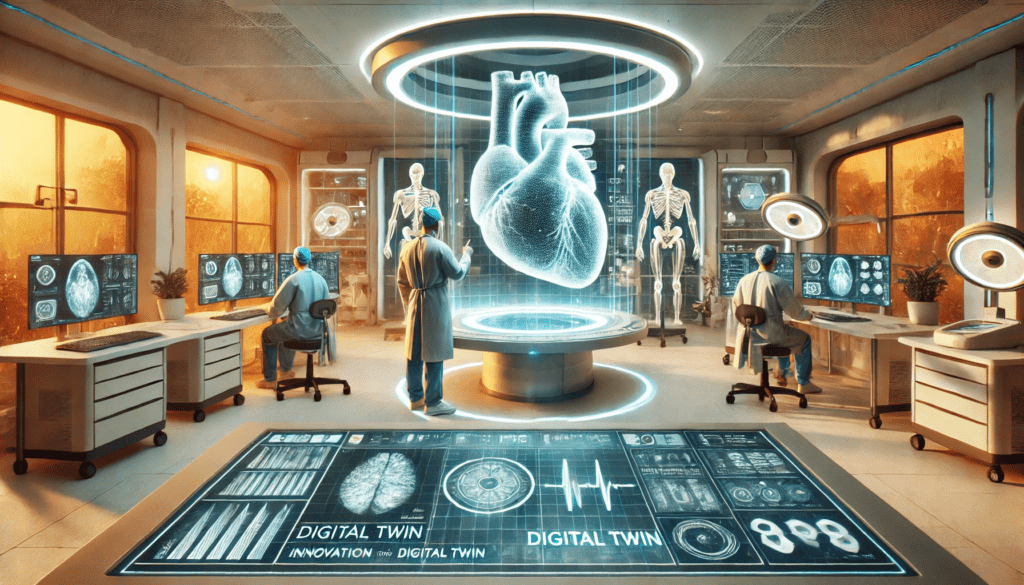
By populating these models with virtual cells capable of generating electrical signals, clinicians can simulate heartbeats and assess how the heart responds to various stimuli. The use of digital twins allows for the testing of treatments in a virtual environment before actual surgery, leading to personalized treatment plans that reduce risks and improve patient outcomes.
Siemens Healthineers also works on digital twin solutions, focusing on the heart and liver. On the picture below you can see an enhanced 3D digital model of a patient’s heart. “Based on MR images and ECG measurements, digital twin technology simulates the physiological processes of a patient’s organ. Virtual planning is used to visualize responses to treatment before the intervention. Siemens Healthineers is developing algorithms that generate digital models of organs based on vast amounts of data.”[4]
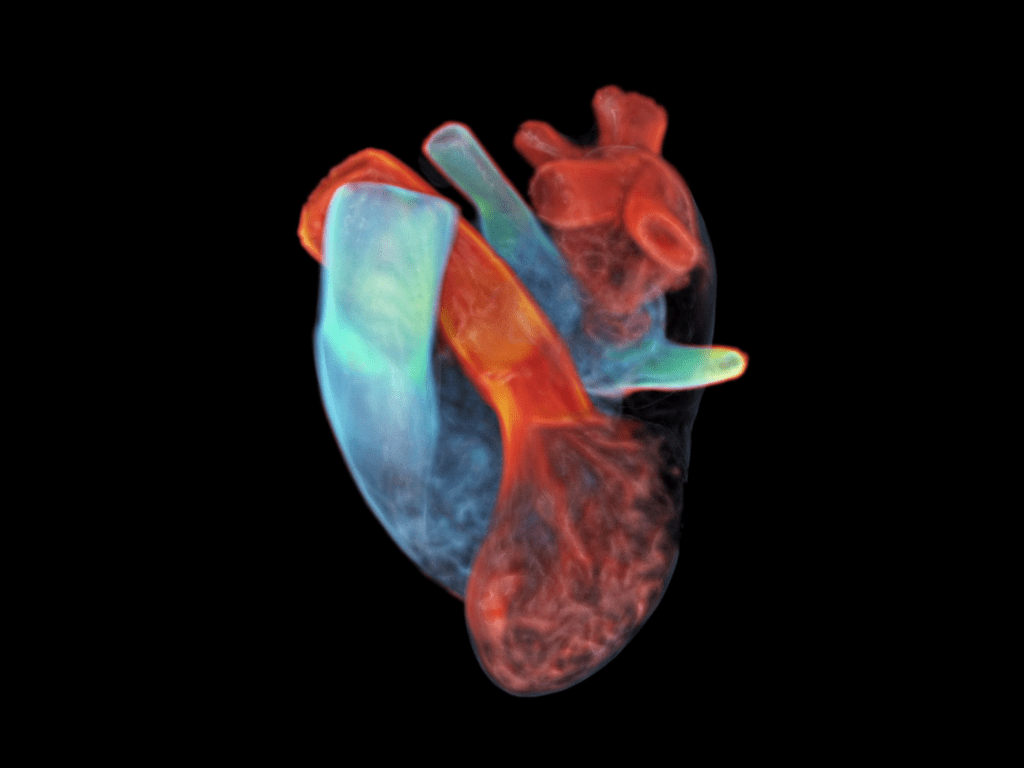
AI-Powered Diagnostic Tools:
AI-supported image evaluation is used in medical exams to detect cancers and cell changes in tissues, blood, and imaging scans. It analyzes biopsy slides, mammograms, CT scans, and endoscopy images to identify tumors, abnormal cells, and early signs of cancer in organs like the breast, colon, and lungs. AI also helps in screening for skin and cervical cancer by detecting irregularities in skin lesions and Pap smears. This technology improves the speed and accuracy of diagnoses, enabling earlier detection and better treatment.
Avenda Health‘s Unfold AI™ is an FDA-cleared platform that utilizes patient-specific data and deep learning algorithms to create personalized, three-dimensional cancer probability maps for prostate cancer management. These maps visualize the location and extent of cancer within the prostate, aiding clinicians in planning targeted interventions.[5]
A study demonstrated that Unfold AI achieved an 84% accuracy rate in identifying the extent of prostate cancer, significantly surpassing the 67% accuracy rate of standard cognitive assessments by physicians.[6]
AI and Solarpunk Ideals
Solarpunk envisions a future where humanity leverages technology in ways that are ethical, regenerative, and inclusive. AI in healthcare, particularly in surgery and preventive medicine, serves as a powerful example of how this vision can be realized.
- Reducing Environmental Impact:
AI-driven surgical interventions contribute to sustainability by minimizing waste, energy consumption, and the use of medical resources. Traditional surgeries often involve extended hospital stays, increased usage of disposable materials (like gowns, gloves, and surgical tools), and higher energy demands to maintain sterile environments.
In some cases, AI algorithms optimize the surgical process itself, predicting necessary equipment and medication in advance, thereby reducing waste. These changes collectively decrease the environmental footprint of healthcare, aligning with Solarpunk’s vision of reducing human impact on the planet.
- Enhancing Accessibility:
Solarpunk emphasizes equitable access to resources, and AI-based healthcare technologies play a pivotal role in democratizing medical services. Historically, access to quality healthcare has been a privilege of wealthier, urban populations. However, AI-driven diagnostic and telemedicine tools are transforming this dynamic.
Mobile health applications, powered by AI, allow people in remote or underserved areas to access medical consultations, diagnoses, and treatment recommendations. This advancement reduces the need for large, centralized healthcare facilities and provides affordable, decentralized care.
- Promoting Preventive Care:
A key principle of Solarpunk is “designing for the future” by focusing on prevention rather than reactive solutions. AI-powered healthcare systems embody this principle by shifting the focus from reactive treatment to proactive health management (see also Salutogenesis).
AI models can predict the likelihood of heart disease, cancer, or diabetes before symptoms appear. Personalized recommendations on lifestyle changes, diet, and exercise further support preventive health. This proactive approach not only improves individual well-being but also reduces strain on healthcare systems, lessens resource use, and decreases the need for hospital visits and travelling.
Outlook
As AI technologies continue to evolve, healthcare systems will experience profound transformations that mirror the core principles of Solarpunk — equity, ecological harmony, and human flourishing. The following emerging developments offer a glimpse into the potential of this convergence:
- AI-Driven Surgical Training:
AI and augmented reality (AR) are poised to revolutionize surgical education and training. Traditionally, surgeons honed their skills through supervised procedures on real patients or dead bodies. However, with the advent of AI and AR, surgical trainees can immerse themselves in hyper-realistic, risk-free training environments.[7]
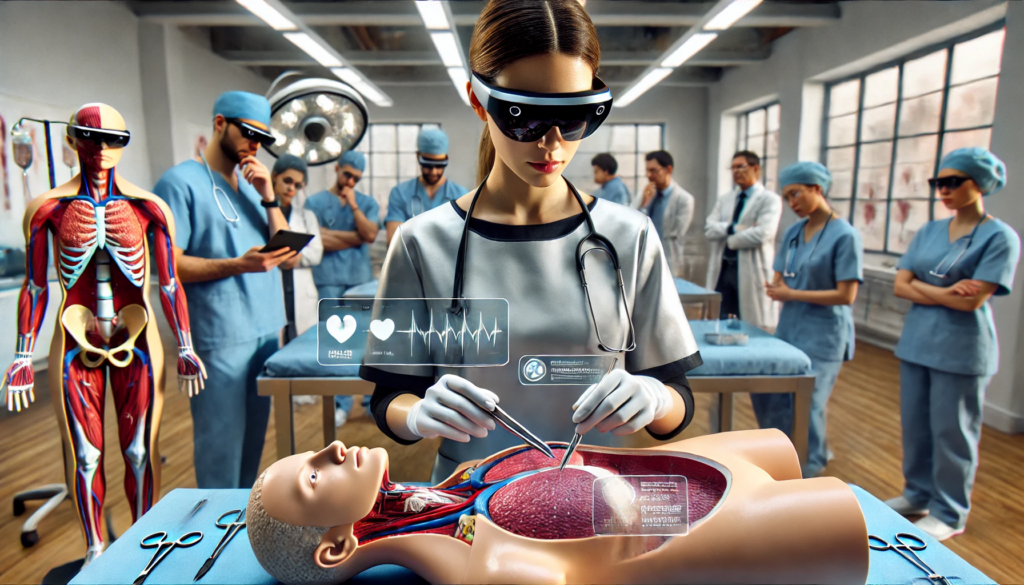
- Personalized Medicine:
One of the most groundbreaking developments in healthcare is the rise of personalized medicine, driven by AI’s capacity to analyze massive datasets and genetic information. Personalized medicine moves away from the “one-size-fits-all” approach to treatment. Instead, it uses AI algorithms to tailor treatments based on an individual’s genetic makeup, lifestyle, and medical history.[8]
- Remote Surgeries:
The concept of remote surgery — where a surgeon in one location operates on a patient in another — is rapidly moving from science fiction to reality, thanks to advances in robotics, AI, and 5G connectivity. Remote surgery relies on AI-assisted robotics for precision and stability during the procedure, as well as on fast data transmission and reception between the sites.[9][10]
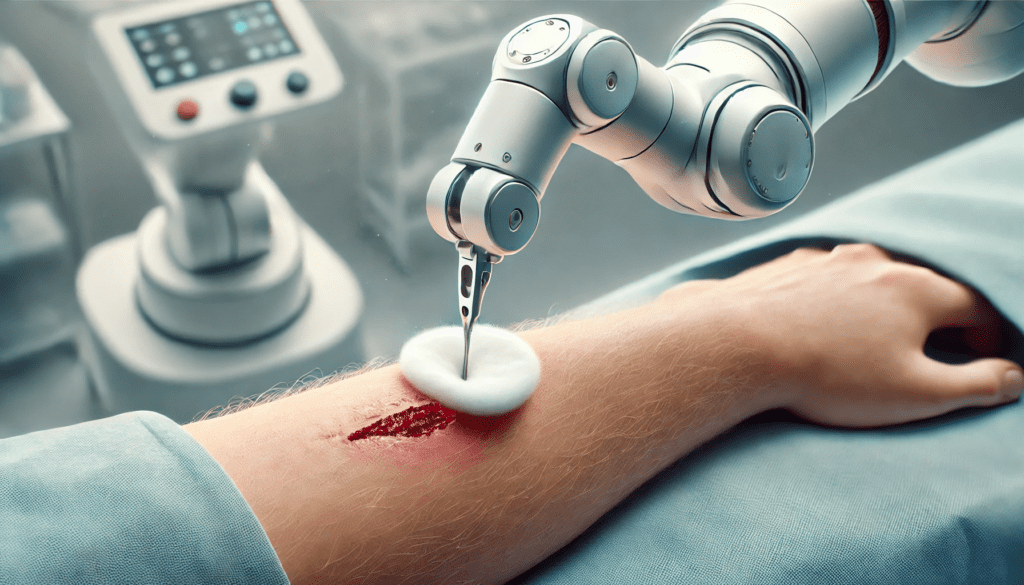
Conclusion
The synergy between artificial intelligence and surgical innovation is transforming healthcare at an unprecedented rate. By making surgeries safer, more precise, and accessible, AI is improving patient outcomes while embodying Solarpunk values of sustainability and equity. As new technologies emerge, the potential for AI to further revolutionize surgery is vast, signaling a future where cutting-edge medicine is both advanced and aligned with human and environmental needs.
References
[1] https://en.wikipedia.org/wiki/Robot-assisted_surgery
[2] https://time.com/7094777/medical-microinstruments-symani-surgical-system/
[3] https://www.wsj.com/health/healthcare/digital-heart-surgery-patient-treatment-c35ec4be
[4] https://www.siemens-healthineers.com/press/media-gallery?search=digital%20twin
[5] https://avendahealth.com/press/new-study-proves-ai-enhances-physicians-ability-to-identify-extent-of-prostate-cancer-with-84-percent-accuracy/
[6] https://nypost.com/2024/07/20/lifestyle/ai-detects-cancer-with-17-more-accuracy-than-doctors-ucla-study/
[7] https://www.healthcareitnews.com/ai-in-surgery-training
[8] Personalized Medicine Innovations: https://www.forbes.com/ai-personalized-medicine
[9] https://www.medicaldevice-network.com/analyst-comment/telehealth-ai-remote-surgical-assistance/
[10] https://en.wikipedia.org/wiki/Telehealth

